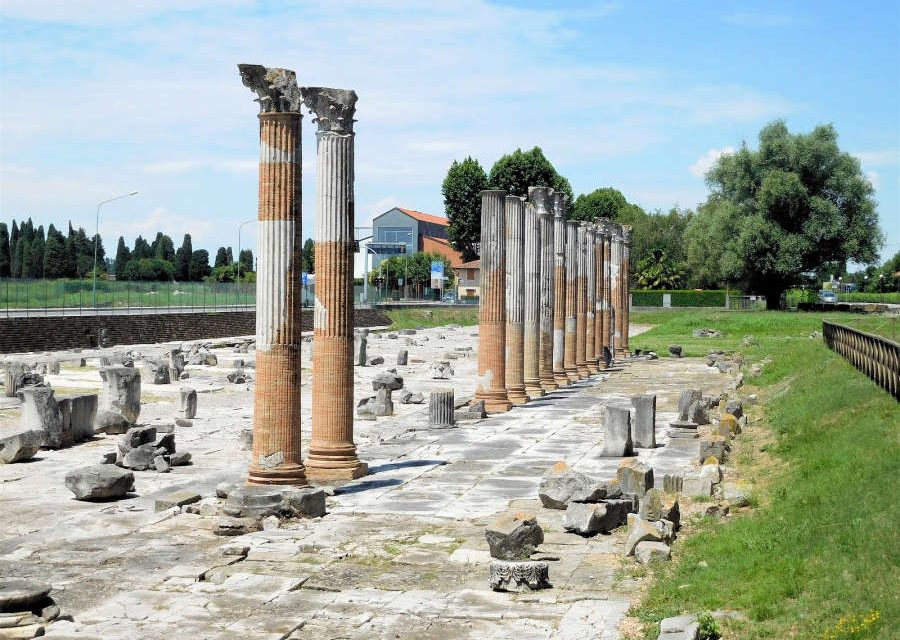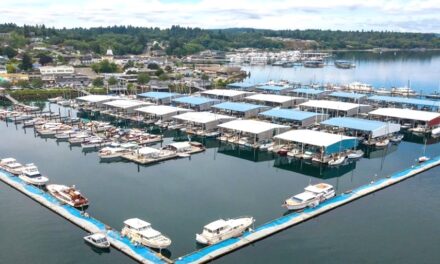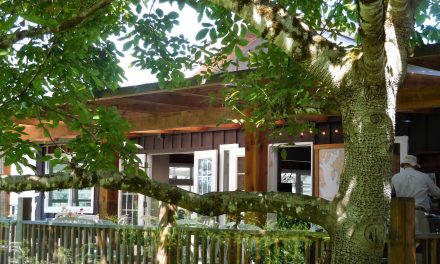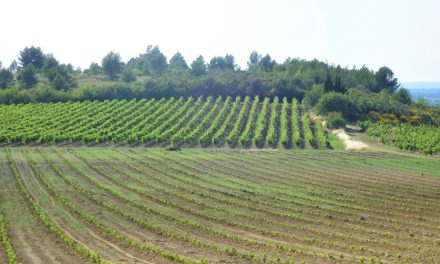During our stay in Grado, we took the public bus to the historic town of Aquileia, a short ten-minute ride away; the town is also accessible by boat via the Canale della Taiada and the Fiume (River) Natissa. At one time, the city was opulent with fortified walls surrounding magnificent forums, palaces, monuments, and harbors.
The Ancient Roman City of Aquileia
In 452, Atilla the Hun came to Aquileia and devastated the city along with other Roman settlements, which began the string of invasions from the north. Colonized in 181 BC, the town became the capital of the tenth region under Augustus. It soon turned into a center of important trade thanks to the navigable river that crossed it and the network of roads that linked the town to the Po Valley and to Central Europe. With the barbarian invasions of the 5th Century, the slow decline began; the finishing stroke came in 568 by the Lombards. Today, several historic sights remain, the Aquileia Basilica and Bell Tower; a few remains at the Roman Forum, a piece of the old Roman road, and funerary sites with sarcophagi.

The Basilica is dedicated to the Virgin Mary and the saints (martyrs) of Aquileia. The original structure was pillaged by Attila the Hun; but by the beginning of the 9th Century, restoration work began under Patriarch Maxentius.
Materials from the previous structure were recovered and the “new structure” is still maintained to this day. The Basilica preserves one of the most extraordinary mosaic floor complexes.
The crypt under the high altar is adorned with frescoes telling the story of Saint Mark and houses the relics (bones) of the martyrs. It is believed that the new faith (Christianity) spread to this area starting from the Church of Aquileia, referred to as the Mother Church.
Click to read the full article on llcruise2018.blogspot.com.








